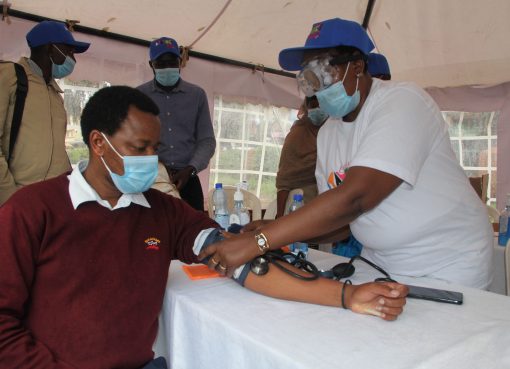The quest for ensuring sustainable food security and improving nutrition in the country is among the Big Four agenda unveiled by the Jubilee administration during its second term in office.
This was with an aim of ending the perennial food scarcity that has been afflicting Kenyans for decades and building a healthier productive nation.
One of the adopted ways of boosting food security was by empowering livestock farmers to get better extension services to rear quality livestock for the market and at the same time help them in accessing subsidies to increase food yields and improve value chain.
Mosiro ward in Narok East Sub County is one of the 30 wards in the county that experiences prolonged seasons of drought that lead to hundreds of livestock dying from hunger and diseases.
However, this sad story is changing for the residents after the government unveiled a Sh18 million water pan expected to benefit over 600 homesteads in Ang’ata Naado village.
The water pan with a capacity to serve 700 homesteads was a big relief to the community since besides feeding their livestock, they can start kitchen gardens where they can plant a variety of vegetables.
The residents who spoke during festivities to launch the water pan on Monday could not hide their joy of having water a few meters from their homes as compared to the long distances they would be forced to walk a few years ago.
Emily Nangutiet, a mother of three said the pan is like a miracle in the village as no one ever thought that the area would have water so near for people and livestock.
“I recall how we would wake up at 5am to trek for over three kilometers to draw water from River Siyiapei only to return home after 9am,” she said while shedding tears of joy.
Ms Nangutiet said during drought seasons, livestock farmers would slaughter some animals and sell others at a throw away price as the animals would die due to lack of food and water.
“We are so grateful to the government that the livestock farmers in this area do not have to move from place to place looking for water for our animals because the water pan can serve all of us,” she said.
She revealed that some children would be forced to remain at home due to lack of food and water as their colleagues enjoyed learning in school.

Ms Nangutiet who lives a few kilometers from the water pan said she has personally started a kitchen garden where she plants vegetables because she is assured of getting water from the pan.
The area Chief, William Ole Naikuni said cases of defilement were high as young girls would walk through the thick bush in search of water in the late hours of the evening.
He reiterated that the project has boosted the economy of the area after an increase in livestock body mass and can be sold at a higher price in the market compared to a few years ago where most livestock would die during dry seasons.
“Our cows are still in good health and shape during prolonged dry seasons. The cheapest cow sells not less than Sh20, 000. In the last two years, hundreds of livestock died during the prolonged dry season,” said the chief.
The administrator noted as a way of sustaining the project, the community has owned it and selected a committee that will help in managing the project.
“Even if it means charging the community a little fees to sustain this project, we will do that to ensure that the residents continue enjoying clean water,” said Ole Naikuni adding that the water pan will require regular maintenance to benefit future generations.
He reiterated that the community will set up a tree nursery with an aim of planting trees around the water pan in a bid to conserve the environment.
The project implemented by Regional Pastoral Livelihoods Resilience Project (RPLRP) and sponsored by the World Bank is one of the 17 similar projects being implemented in arid areas of the county.
The project National Team Leader James Tendwa said the water pan with a capacity of holding 28, 000 cubic meters of water is sitting on a three acre piece of land.
He said the major target of the project was to ensure the livestock remained in good health even in the drought season to benefit the residents economically.
“Our joy is to see the livestock in good health even in dry seasons. We are happy to hear success stories that livelihoods have been changed because of the presence of the water,” reiterated Tendwa.
Tendwa noted that apart from the 600 households that fetch water from the pan, 2000 head of cattle and over 5000 sheep and goats drink water pumped from the water pan every day.
He said the project is designed in a way that the water from the pan is channeled to water troughs where the animals drink from hence the water pan remains clean.
By Ann Salaton




